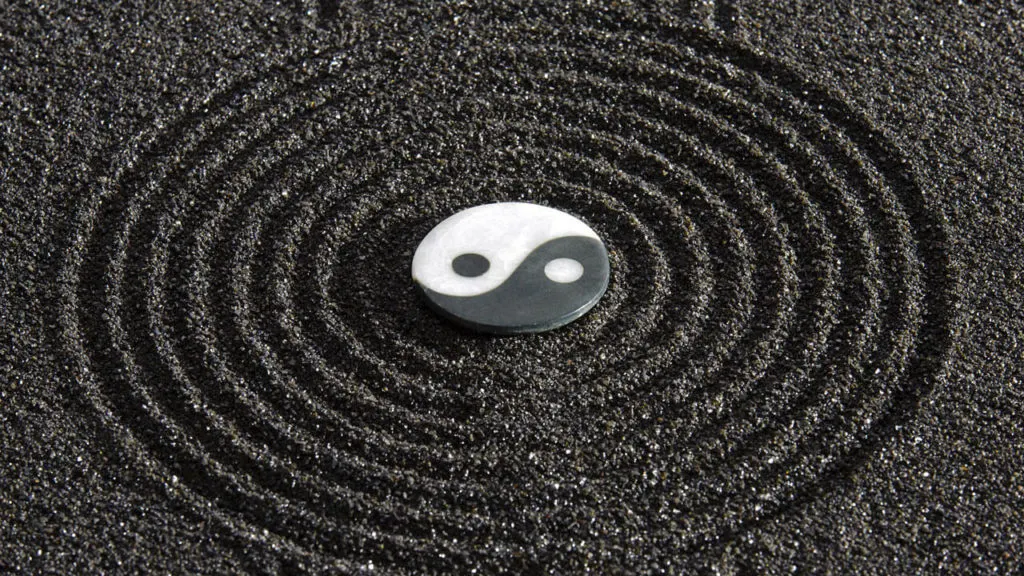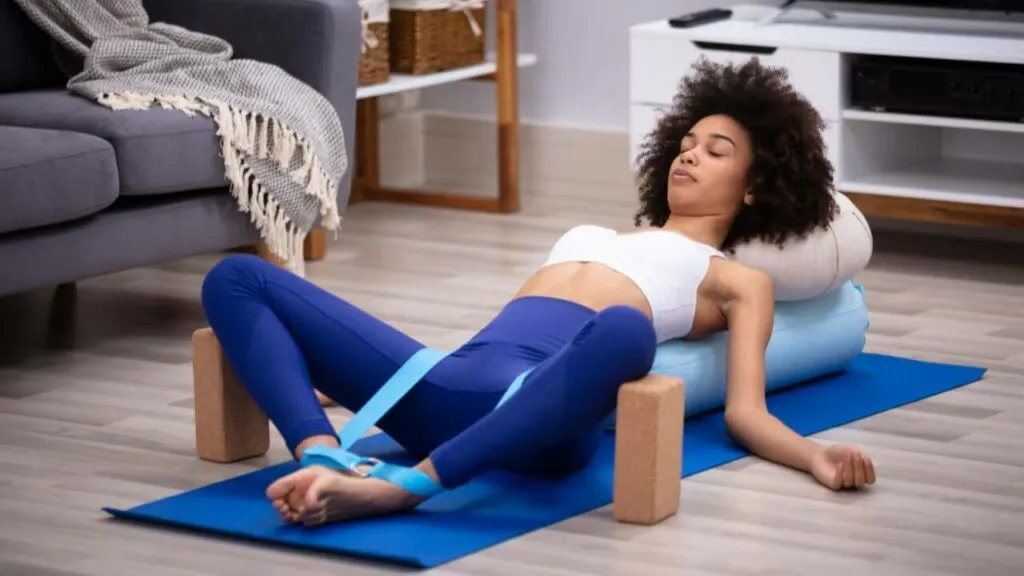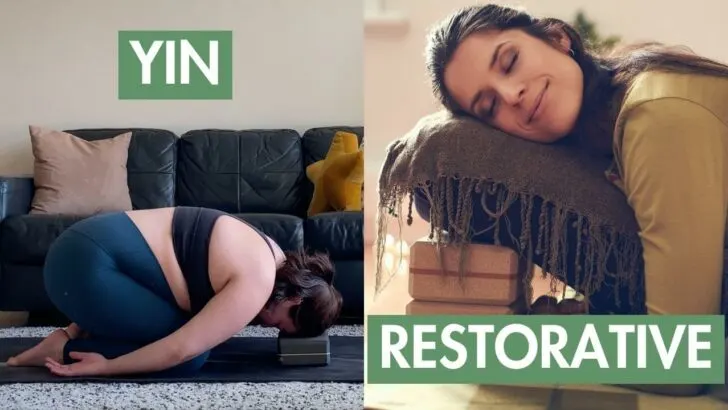From the outside, it may look like yin and restorative yoga are similar. But the approach to each style varies greatly and the differences between each lead to significantly different benefits. As a yin yoga teacher, I often have people come into my class thinking that yin will be easy or as gentle as restorative yoga, which is not the case!
Before you decide if yin or restorative is for you, it’s essential to know who each practice is for and what the true aim is to ensure you’re supported on the mat as best as you can be.
Main Differences
Yin and restorative yoga both use props and are practiced mainly on the ground. But the similarities stop there.
Physically
Yin aims to put healthy physical stress on the body in order to access your connective tissue, called fascia, which assists in joint health and overall flexibility.
Restorative aims to be completely passive and have no stress on the body whatsoever.
Mentally
Yin focuses on three main principles to give the body ample time to open slowly. But this also works for the mind, giving you time to be with your thoughts, explore the edge of your comfort zone, and get comfortable being both still and quiet.
Restorative gives plenty of space for quiet in order to find a blissful state of relaxation. You may have experienced this in Savasana. It’s a state where you may drift off to where you’re not quite asleep, but you’re not fully present either.
Props
Yin uses props to support the body and its structure (your bones) so that you can avoid any holding sensation. When you hold a pose with your muscles you won’t get into your deep tissue, which is what yin wants. With the support of props, you’re able to get into your joints and deeper into poses without injury.
Restorative uses props to cradle the body. By doing this it ensures that you are as comfortable as possible so you can become fully relaxed. No effort here!
How Long Poses are Held
Yin yoga poses are typically held for 3-5 minutes. However, some are held for as little as 1 minute, and sometimes as long as 10. Your fascia isn’t accessed until 90 seconds into a hold, so poses are held longer to receive the benefits.
Restorative yoga poses are held for as little as 5-7 minutes or as long as 20! This time is required to let the body completely relax into each pose.

What is yin yoga & its purpose?
Yin yoga is a relatively new style of yoga that was developed from Taoist philosophy and differs greatly in philosophy and pace from your more commonly known yang-style classes such as Vinyasa, Hatha, or Ashtanga. Originally called Taoist yoga, it was brought to the West in the 1970s by a martial arts teacher named Paulie Zink.
It incorporates traits from both Traditional Chinese Medicine and classic Indian yoga philosophy. Stemming from its Taoist origins, Yin’s aim is to balance the body and its energies, just like that of the yin/yang symbol. Your active, yang-style classes can be balanced with the practice of yin, a cooling, contemplative practice.
Long-held postures for an average 3-5 minutes make yin yoga stand out. It’s a practice that focuses mostly on the lower body and focuses on stimulating meridian lines for the benefit of your health. Sarah Powers and Paul Grilley are credited with bringing this style of practice to the masses and adopting it to support our Western practices.
While active styles of yoga focus on building strength and benefiting the muscles, yin yoga’s focus is on the joints and your connective tissue.
Yin Yoga Benefits
Yin’s benefits are great for the body, but the stillness of this practice greatly aids the mind as well.
- Increases flexibility and range of motion
- Reduces stress and anxiety
- Boosts circulation
- Balances mind, body & emotions
- Aids sleep
- Cultivates patience
Who should practice yin yoga?
Don’t let the style of practice fool you into thinking that it’s only for lazy people or won’t benefit you physically!
- Anyone who practices yang-style yoga regularly
- Fitness lovers
- Athletes
- Desk Workers
Honestly, I believe that everyone should practice yin yoga because of its benefits. However, if you are injured or pregnant you should take caution. It’s not that you can’t practice yin, but you will need to be more mindful or opt to practice restorative yoga until after birth or your injury is healed.

What is restorative yoga & its purpose?
Restorative yoga is the ultimate practice for healing. It uses props to support the body so that it can fully rest and find a state of Savasana in each pose, that blissful state where you might not know where you are. Restorative yoga was developed by Judith Hanson Lasater, modeled after the use of props from one of the founders of modern yoga, BKS Iyengar, in active yoga practices. Lasater adapted the use of props for a gentler practice aimed at healing.
Restoratives’ purpose is all in the name. This practice is meant to restore the body back to its natural health, whether that is mentally to find peace, or physically from an injury. The aim of this practice is to be as passive as possible with little to no effort.
Restorative Yoga Benefits
Restorative yoga can be a great alternative to meditation or can provide poses to practice meditation in for those who struggle to sit still.
- Assists in calming and relaxing the mind and body
- Promotes deep healing mentally and physically
- Can provide relief from chronic pain
- Relaxes the nervous system
- May boost your mood
Who should practice restorative yoga?
Think of restorative yoga as the go-to practice for all types of healing and relaxation.
- Those who are stuck in “fight or flight”, or suffering from stress
- Chronically ill
- Those who are sick or recovering
- Those who are injured or recovering from an injury
What’s next?
- Practice yin yoga with me on YouTube!
- Mindfully incorporate yin yoga into your regular yoga practice in my 30 day yoga adventure – Journey Home.

